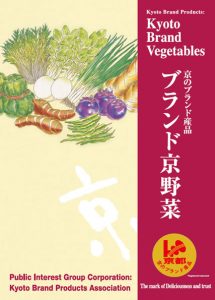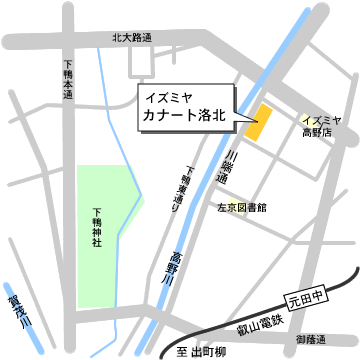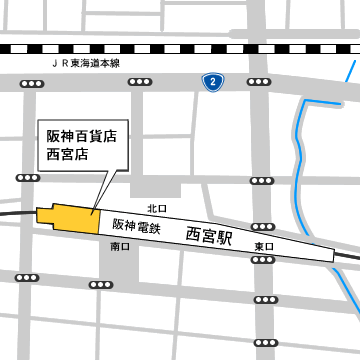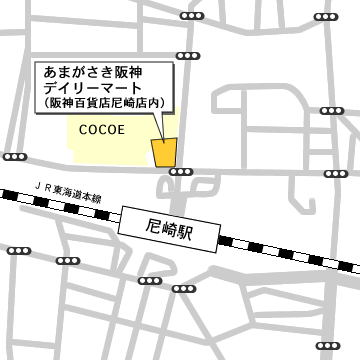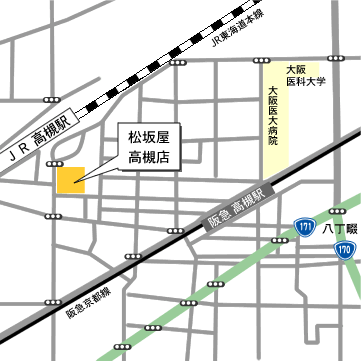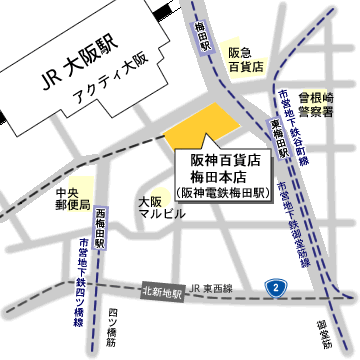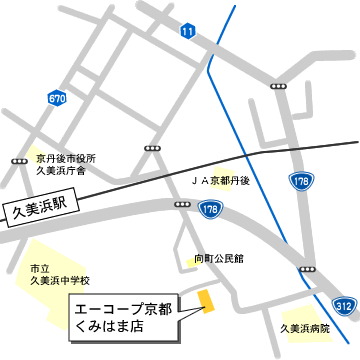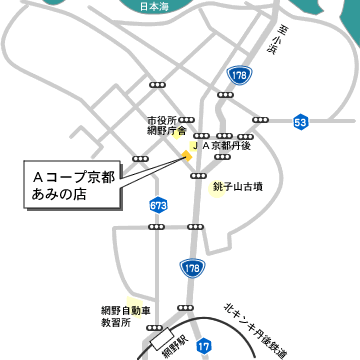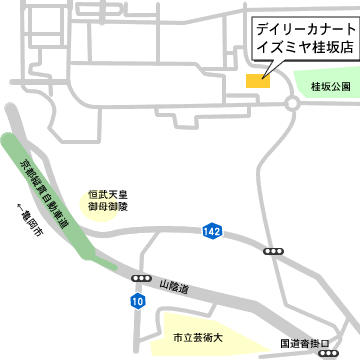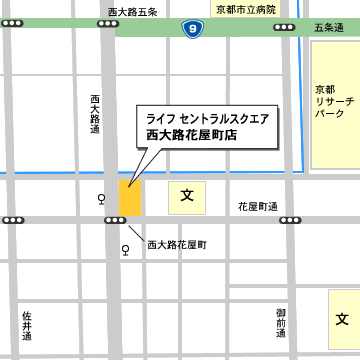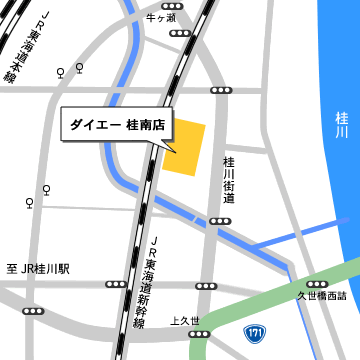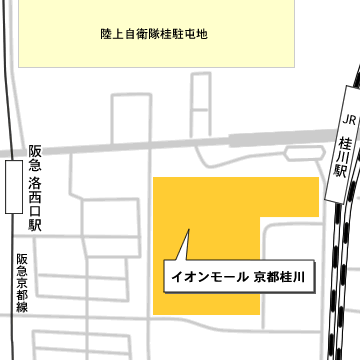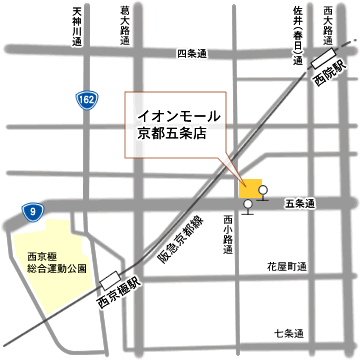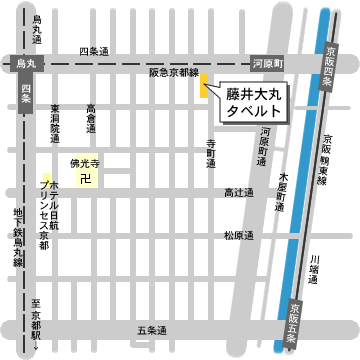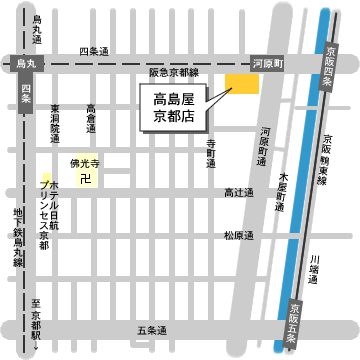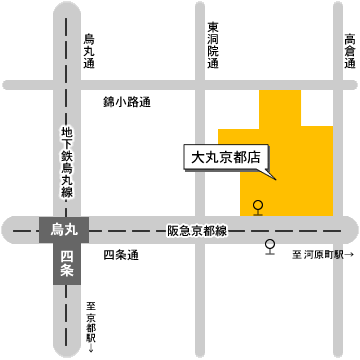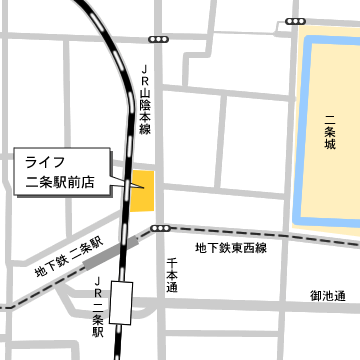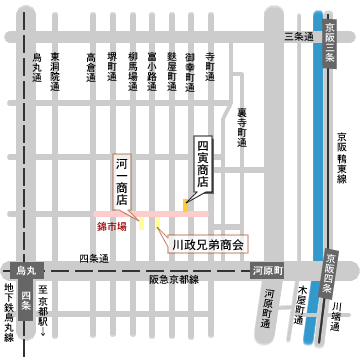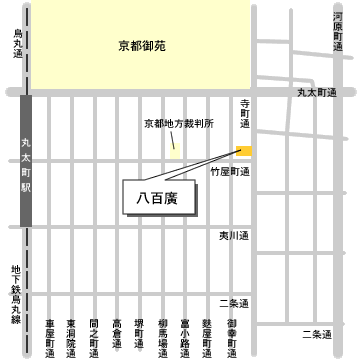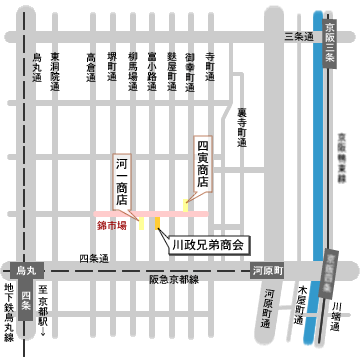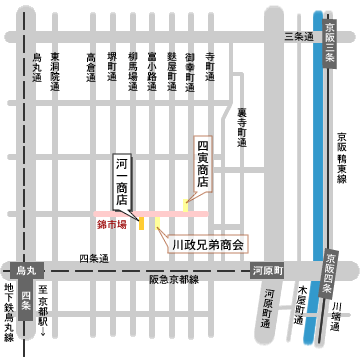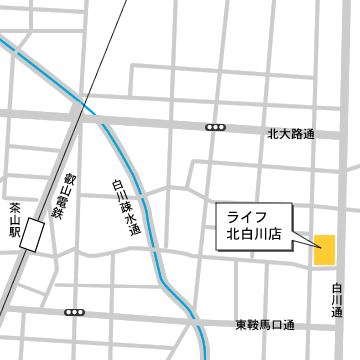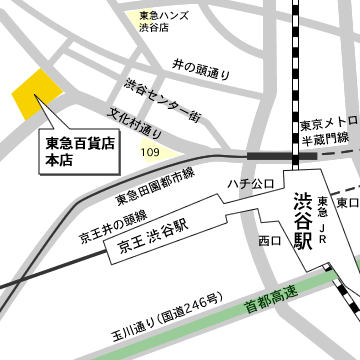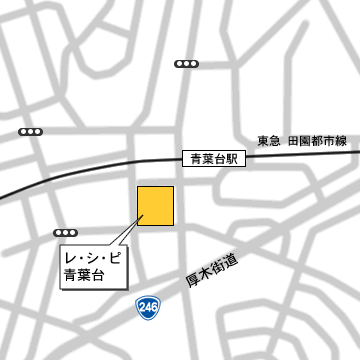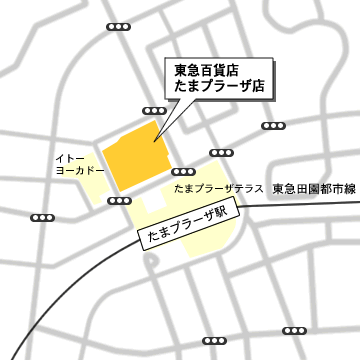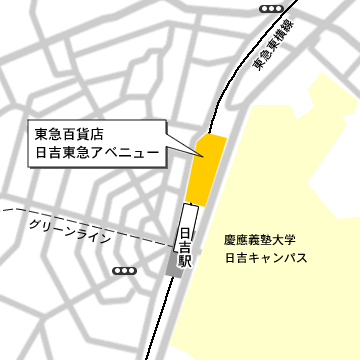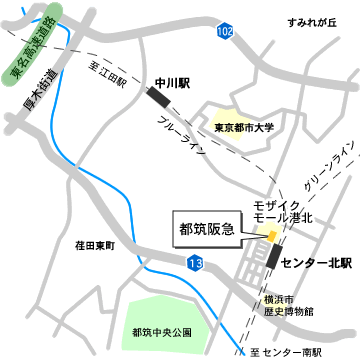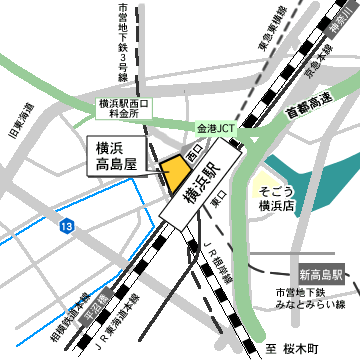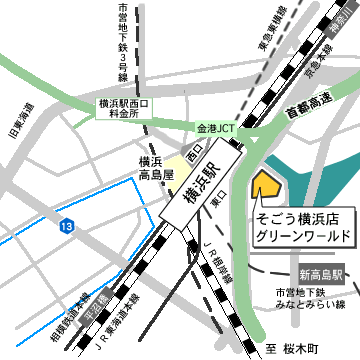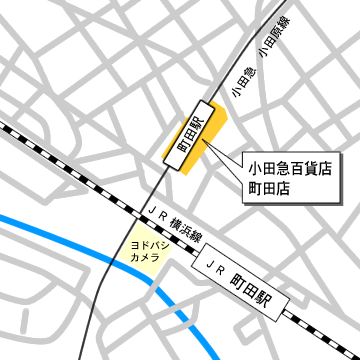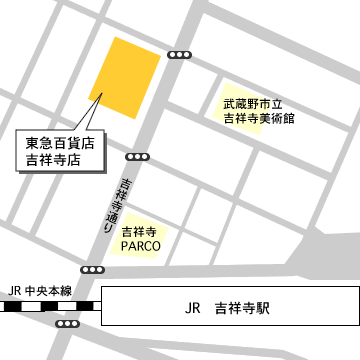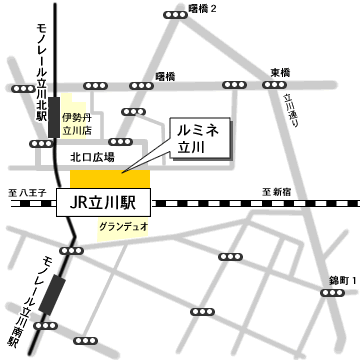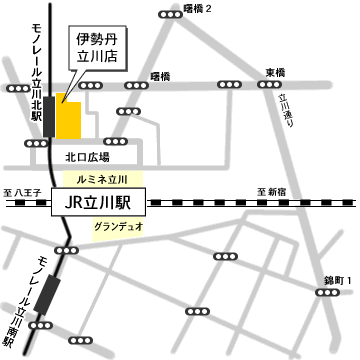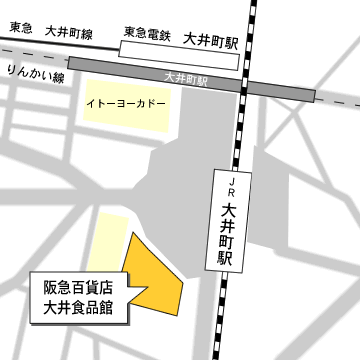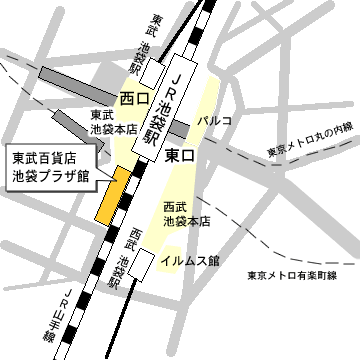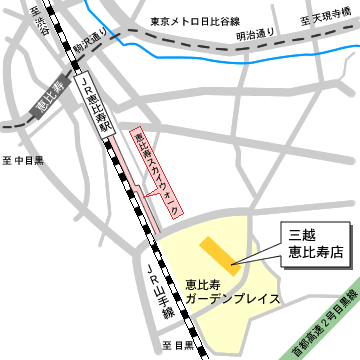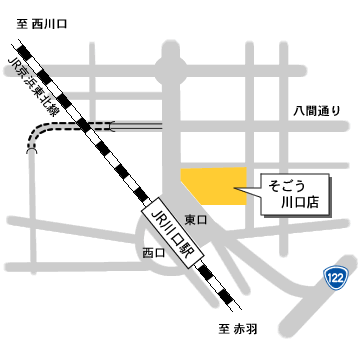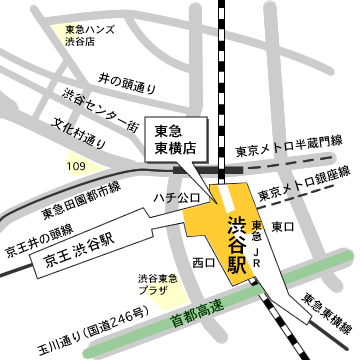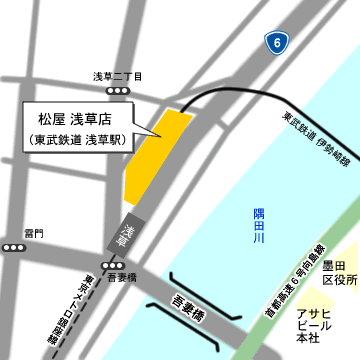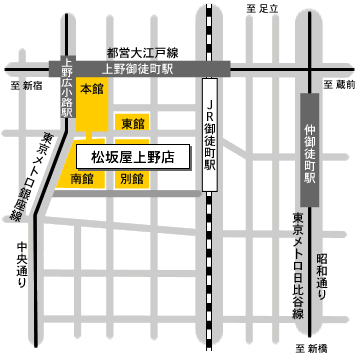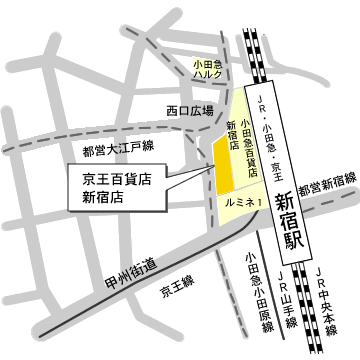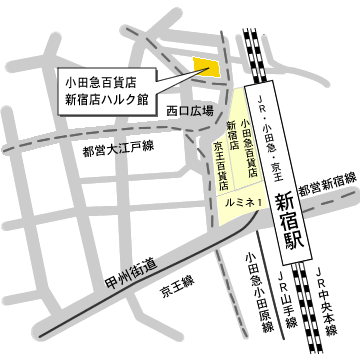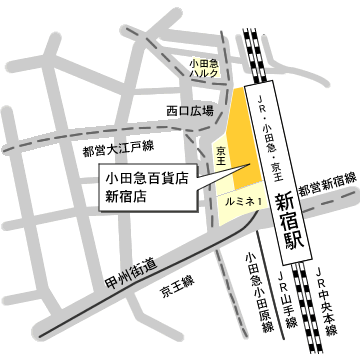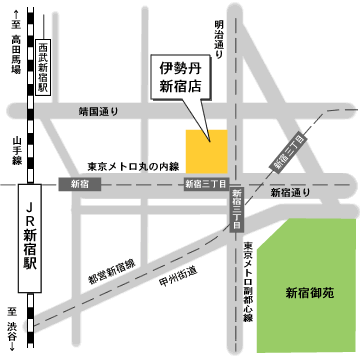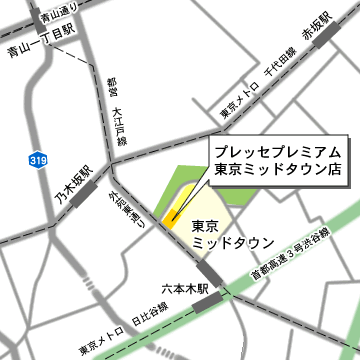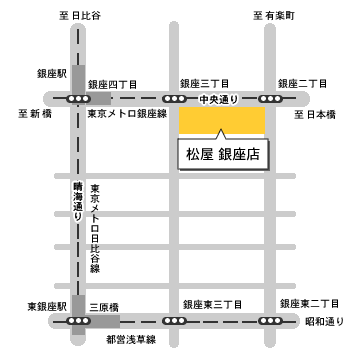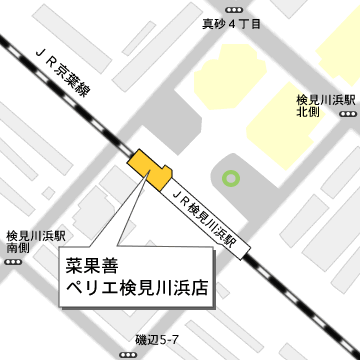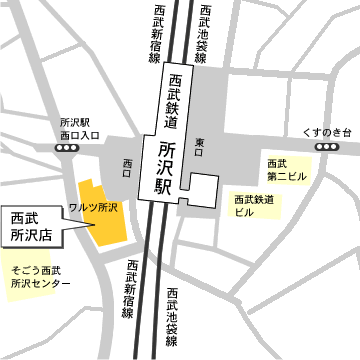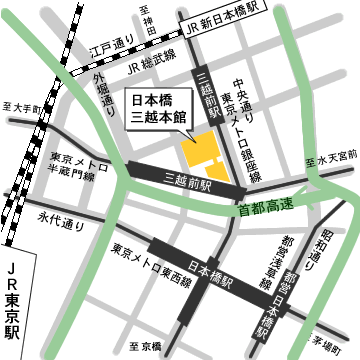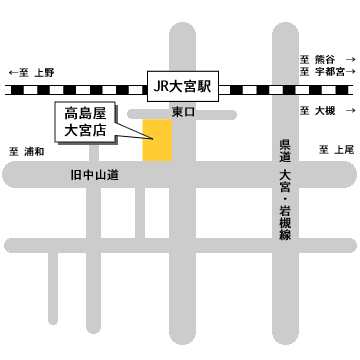
Kyoto Brand Products
- Kyotango Pear
- Tamba Kuri (Chestnut)
- Tamba Azuki Beans, Product of Kyoto Prefecture
- Black Soy Beans – New Tamba Black, Product of Kyoto Prefecture
- Tango Guji (Horse-head fish)
- Tango Egg Cockle (bivalve mollusc)
- Kintoki Carrot
- Kuwai (Threeleaf Arrowhead)
- Kyo-Yamashina Eggplant Kyoto Pickles
- Iwai (brewer’s rice) − Kyoto Sake

Kyo Mizuna (Japanese mustard greens)
It has deep-cut leaves as its main characteristic. Mizuna is believed to have been cultivated in Kyoto since before the Edo period, as records of “Yoshufushi” Magazine report that is was cultivated around Toji Temple and Kujo neighborhood. Kyoto’s Mizuna is also called, Sensuji Mizuna. It has very thin, delicate, white leaf stalks, which contrasts beautifully with the green. Large 4kg bags were sold in large quantities in the past, but recently the small packages have become very popular and sell quickly. Kyo Mizuna is soft, and crisp and is naturally suitable for hot pot dishes, but also good for salads. It represents one of Kyoto’s vegetables (Kyo-Yasai), which can be enjoyed all year round.
Articles on Kyo Mizuna
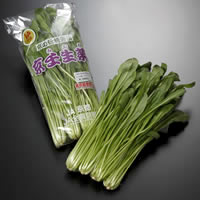
Kyo Mibuna (Japanese variety of wild mustard)
It is said that Mibuna was naturally produced as hybrids in the 1800s, from Mizuna plant and was largely produced in Central Kyoto, near where it is known today as Mibudera Temple. It is characterized by its long thin leaves, shaped like a spatula. They were originally sold in large stocks, but similar to Mizuna, shipments in small stocks increased all around the year. With a mild mustard aroma, it was added in Kyoto pickles a long time ago and has been handled as a luxury food item ever since. It can be used in various ways, such as for fried or boiled foods, marinated or in salads. Vitamin C and fiber richness are among the features of the Kyoto Mibuna plant.
Articles on Kyo Mibuna
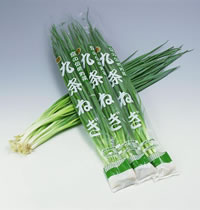
Kujo Green Onions (Welsh onions)
The slimy substance inside the leaves is the secret to the original sweetness and softness in quality of the Kujo green onions. The history of the green onion cultivation in Kyoto is very long. Past records show that it was introduced 1,300 years ago, during the Wado era. Kujo onions represent a variety of leaf onions (green onions) in Japan, while Kanto has deep-rooted onions (white onions). Kujo green onions were first cultivated in the Kujo area, southern region of Kyoto, hence this is how it got its name. Unlike the white onions, the green leaved onions contain a lot of carotene and vitamin B. Warm miso soup with plenty of Kujo onions is said to be an effective medicine for colds. Kujo onions is one of Kyoto’s vegetable (Kyo-Yasai), where it can be eaten in various dishes, such as pot dishes, Sukiyaki, side dishes, as well as in other Japanese cuisines.
Articles on Kujo Green Onion (Welsh onions)

Kyo Tamba Daikoku Hon Shimeji Mushrooms
Having the “smell of a Matsutake mushroom, but the taste of a Hon Shimeji mushroom”, this Hon Shimeji mushroom is known as the Kyo Tamba Daikoku Hon Shimeji mushroom. It is grown in the Tamba region and can be purchased throughout the year. Its unique resemblance of Daikoku (God of Wealth), is the origin of how it got its name. It can be enjoy through various cooking methods, such grilled, stewed, or fried.
Articles on Kyo Tamba Daikoku Hon Shimeji Mushrooms
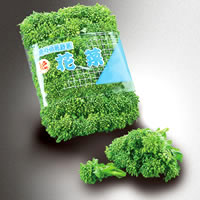
Japanese Rapeseed
The Fushimi Rapeseed is cultivated as cut flowers in the winter, but sometimes only the bud is picked and served as an edible dish item. It has both a pleasant texture, and a distinct pungent taste. This spring ingredient will satisfy not only your stomach, but your heart too. Another notable thing about the Japanese Rapeseed is its nutritional value. It contains three times more β-carotene and calcium than the broccoli, king of the green vegetables. “Pickled Rapeseed” has been known as one of Kyoto’s pickle products produced in the winter, ever since the past.
Articles on Japanese Rapeseed
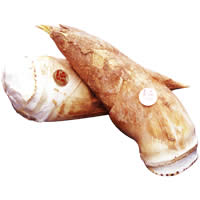
Kyo Bamboo Shoot
There are two theories about the origin of the bamboo. The theory established at the foot of Nishiyama, says that Ingen, a monk from the Ming Dynasty, brought back the mother bamboo of “Mousoudake” (Moso Bamboo), when he visited Manpuku Temple on Mt. Obaku in Uji, in 1654. The other theory claims that a Zen priest was abroad in China during the Tang Dynasty, and had brought it home and planted it near Okukaiinji Temple, in Nagaokakyo. Without any acridity, the soft and sweet tasting bamboo shoots of Kyoto are ranked the highest in Japan. They are produced from bamboo fields, which are managed exclusively by bamboo specialist farmers. The fertilization, soil placement, bamboo thinning etc. are all carried out manually by the farmers. When the cherry blossoms are in full bloom, the whole Nishiyama area becomes filled with sprouting bamboo shoots. You can find banners with “Morning Harvest Bamboo Shoots” written on them, attracting crowds of people waiting to buy their fresh bamboo shoots, for they are dug up early in the morning.
Articles on Kyo Bamboo Shoot
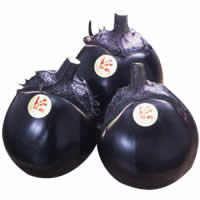
Kamo-Nasu Eggplant
As the saying goes “First – Fuji, second – hawks, third – eggplants”, eggplants have been referred to as a sign of good luck for a long time. Because the words “eggplant” and “to achieve” are homonyms in Japanese, people believed that it can lead you to accomplish your desires. In the Edo era, it was said about the Kamo-nasu that “eggplants come in different colors – purple, yellow, and white, but the the purple colored ones are great. There are also different shapes, such as long and thin eggplants, but the flavor of big round eggplants from Rakuto Kawara (present Sakyo Ward, Yoshida, around Tanaka) as the best”, according to the description found in the books. The present Kamo eggplant type is carefully nurtured by the people of Kamogamo. It is a masterpiece of Kyoto and is said to be the queen of eggplants. Kamo eggplants are characterized by its white color under the calyx (the outermost group of floral parts) and its heavy weight.
Articles on Kamo-Nasu Eggplant
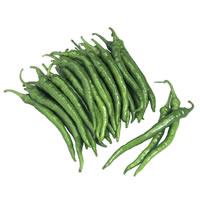
Fushimi Chilli Pepper
The Fushimi chilli pepper is recorded in “Yoshufushi” magazine from 1684, as the famous product of Fushimi, Yamashiro Province. There is evidence that it has been cultivated around Fushimi for a long time. It is also called, “string pepper”, known for being the longest among the elongated chilli peppers, which can reach up 20cm. Many people in Kyoto grow it in their home gardens, not only for the fruit of the plant, but also for their leaves (Kigosho), for they are cooked as Tsukudani (preserved food). This practical vegetable is edible and goes well in grilled, fried, or stewed dishes. This vegetable is rich in dietary fiber, calcium and vitamin C, which helps the body to cope with the summer fatigue. It is a great gift our ancestors in Kyoto left for us and their future generations.
Articles on Fushimi Chilli Pepper
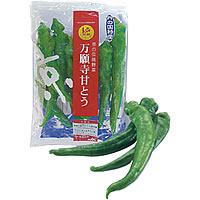
Manganji Pepper
It is said that the Manganji pepper, originated in Maizuru, by crossing the Fushimi Chilli Peppers with the Big Green Peppers in the late Taisho period. While it has the size to be the king of peppers, its flesh is soft, sweet, has fewer seeds, and it is easy to eat. This delicious pepper appeared on the Kyoto market some 20 years ago. Due to its pleasant taste and interesting shape, they are gradually making their way into the market. This new Kyoto vegetable (Kyo-Yasai) is quickly gaining popularity.
Articles on Manganji Pepper
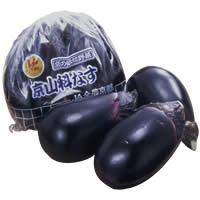
Kyo Yamashina Eggplant
It is a plump egg-shaped vegetable, with fine pulp and a lot of moisture. It was mainly cultivated in Yamashina and was the main eggplant variety in Kyoto until the early Showa era. However, due to its low yield, it was replaced by other varieties. The skin is very thin, which makes its distribution difficult, but the softness and taste are outstanding. It tastes great simmered, grilled and pickled.
Articles on Kyo Yamashina Eggplant
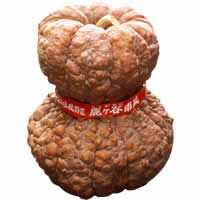
Shishigatani Squash
The “Kabocha Kuyo” (Pumpkin Service) event, which takes place at Anrakuji Temple, in Shishigatani, Sakyo Ward, has been continuously held for 300 years. During the Edo period, chrysanthemum pumpkins were brought back from Tsugaru and have mutated, taking the shape of the present day Shishigatani Squash. During the middle of Meiji period, people mostly ate Shishigatani Squash when it came to eating squashes in general. Nowadays, there is hardly anyone left, who cultivates this squash in Shishigatani, so the main production area has become Ayabe City in Central Kyoto Prefecture. People attend a “Kabocha Kuyo” to express their gratitude for food and to receive blessings for continued health, for the Kabocha (squash) has benefits for fighting paralysis. The Shishigatani Squash contains alpha-Linolenic acid, which helps prevent diseases in adults. Even without scientific analysis, our ancestors seem to have had this insight.
Articles on Shishigatani Squash
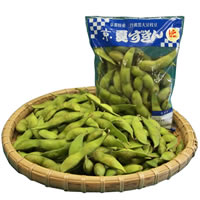
Kyo Summer Soybeans
Kyo Summer beans are summer limited Edamame (soy) beans, produced from the Black Soybeans in Tamba. The beans are big and flavorful, and full of sweetness, with a soft and enjoyable texture. Together with the autumn soybeans “Purple Beans”, you can enjoy the Black Soybeans of Tamba throughout the summer and autumn seasons. Carefully selected large-sized beans that have just enough sweetness in them are selected for delivery. They are rich not only in protein, but in vitamin C and calcium as well. In addition, the boiled beans can be enjoyed when added to rice, salads and mixed vegetable tempura.
Articles on Kyo Summer Soybeans
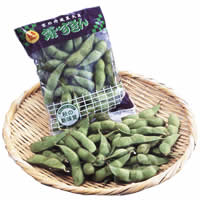
Purple Soybeans
The Purple Bean is an Edamame bean (soy) that is produced from the Tamba Black Soybeans, where they boast top in quality in Japan. It got its name from the light purple colored skin of the bean and the hood-like shape of the bean shell. Among the farmers in Tamba, the “Edamame Festival” is known as and has been popular since the ancient times. The large-sized beans are rich in texture and sweet in flavor, which are the characteristics of this Purple Bean (autumn Edamame). You can enjoy it not only as regular Edamame, but also with rice, salads and tempura.
Articles on Purple Soy Beans
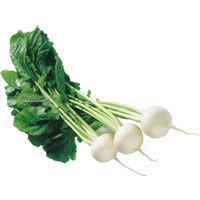
Kyo Kokabu (Small turnip)
This type of turnip is one of the oldest vegetables, and its cultivation was encouraged as a supplement to the five grains (staple food) in the 7th year of Jito (year 693). The Kyo Kokabu (turnip) was nurtured in Kyoto’s climate, where it gets its pure white skin, beautiful shape, and its fine dense flesh, with a delicate sweetness; just like a real work of art. Starting with Kyoto Pickles and steamed turnip dishes, the Kyo Kokabu is an indispensable ingredient in Kyoto cuisine. Moreover, this type of turnip can be enjoyed not only in wide varieties of raw dishes, such as salads, but its leaves can also be cooked in delicious meals. By all means enjoy the Kyo Kokabu turnip, produced with such care.
Articles on Kyo Kokabu (Small Turnip)

Ebi-Imo (Shrimp-shaped taro)
Ebi-Imo is a type of taro, produced through a different cultivation method. During An’ei, the ancestor of today’s “Imobou” (name of restaurant), Hirano Gondayu planted the taro seeds, brought back by Shorenin from Nagasaki, enabling the cultivation of the shrimp-shaped taro, called Ebi (shrimp)-Imo (taro). The striped creases found on the skin resembles a shrimp. It is one of the best tasting vegetable among a number traditional vegetables, characterized by the density of the root plant, and its shape not easily broken even when cooked. The famous “Imobou” dish, cooked with Cod fish is not only the name of Kyoto’s restaurant. It represents one of the “Obanzai” (Traditional Kyoto-style dish) dishes and has been popular in many homes since the old days.
Articles on Ebi-Imo (Shrimp-shaped taro)
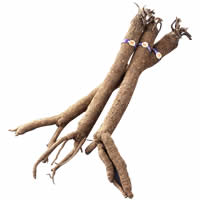
Horikawa Burdock
There are many unique things among the traditional Kyoto vegetables, however the Horikawa Burdock stands out as one of its best. Due to its similarity to pine roots, very few people recognize the burdock as a vegetable. Its roots are set in the moat of Jurakudai, built by Toyotomi Hideyoshi. After his death, the residents of the surroundings threw out their scraps of vegetables, becoming the compost for the burdock to grow thick. It is said that the farmers who found this, have come up with ideas to produce burdock within two years. The Horikawa burdock is a great product, with its soft fibre and flavor reaching all the way to the core. It is also rich in vitamin C and minerals, which has the effect of purifying the blood. Indeed, it can be said that the burdock is a gift from Kyoto’s ancestors to the modern people.
Articles on Horikawa Burdock
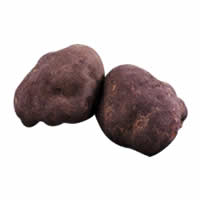
Japanese Yam
The Japanese (mountain) yam, also called, “Tsukune Imo”, has long been cultivated in the Kurita area of Miyazu City, in northern Kyoto Prefecture. These yams are grown in “potato soil”, which has excellent drainage and maintains moderate moisture at all times. Miyazu’s mountain yams are valued as high quality gifts for their flesh density, low moisture, and stickiness. The mountain yam is a representative of the healthy vegetables, also useful as a nourishing tonic. If you peel the skin and crush it in a Suribachi (Japanese mortar), and add Bonito broth for thinning, you can enjoy the finest “tororo” (yam paste that is sticky, and slimy in consistency). It is a valuable ingredient for Kyoto cuisine, including rice bowls, buns and other sweets.
Articles on Japanese Yam
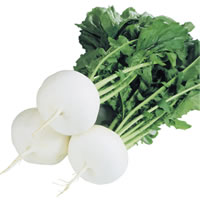
Shogoin Turnip
The large and majestic Shogoin Turnip was grown in Kyoho (1716-1736) by a farmer known as Iseya Rihachi, from Sakyo-ku Ward, in Kyoto. He planted the Omi turnip seeds that he brought home from Katata in Omi. As a result of the improvements he made, he harvested good-quality, large turnips with a fine flesh structure. The Shogoin turnip is famously known as the ingredient for Kyoto’s “Senmaizuke Pickles”. It can also be used for delicious steamed dishes or eaten raw in salads. Enjoy the Shogoin turnip, which represents as one of the winter vegetables in Kyoto.
Articles on Shogoin Turnip
The Shogoin Daikon is large, round radish.
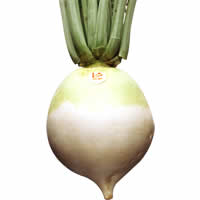
Shogoin Daikon (Japanese radish)
It is said that the big round Shogoin Daikon was originally a long-shaped Daikon. It’s origin dates back to 180 years ago, when the Daikons were brought to Kyoto as offering from Owari province (today’s Aichi Prefecture). An exemplary farmer took the seeds of the this long Daikon and sowed them around Shogoin Temple. For some odd reason, the daikon grew to be round instead of long.The Shogoin daikon is not bitter and is a little on the sweet side.Even when simmered for a long time, the structure of the Shogoin Daikon does not fall apart. When eating the cooked daikon, it immediately melts in your mouth even though the shape manages to stay intact throughout the cooking process.Every year in the middle of December, an event, called “Daikondaki” event (burning of Japanese radish) takes place at Senbon Shakado. This event is held for the purpose of keeping away diseases that lead to paralysis. People gather to pray for a long healthy life, so that they can continue to enjoy eating the soft, delicious daikon every year.
Shogoin Daikon (Japanese radish)
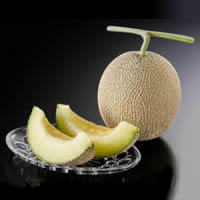
Kyotango Melon
Kyotango City faces the sea, and it is also a place where you can find delicious fruits. One can cultivate melon from early summer through autumn. Kyotango melons are considered a top quality melon, cultivated in Kyotango City. The melon is grown in an environment where the climate and temperature is most suitable for this fruit, especially the excellent drainage is, and the abundance of sunshine that it receives. Each melon is grown carefully under strict quality management in order to produce the perfect melons both in appearance and in taste. The sweet and mellow fragrance of the fruit are the features of the Kyotango Melon.
Articles on Kyotango Melon
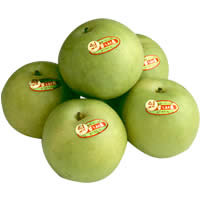
Kyotango Pear
Kyotango pears are cultivated in northern Kyoto, in the Tango peninsula. It is the 21st Kyoto brand product, which gained its official recognition in 2000. It is cultivated in the peninsula under the sunshine, where the air is clean and the water is pure.
The cultivation history of Kyotango pear goes back to Meiji period. It is known for the freshness that harmonizes with the sweetness. Each fruit is measured with a sensor, and only those above certain levels are recognised as products. You can enjoy these melons in various desserts, such as a compote!
Articles on Kyotango Pear
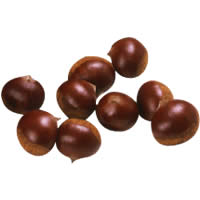
Tamba Kuri (Chestnut)
The most well-known chestnut is the Tamba chestnut in Japan. With its long history and richness in taste, Tamba chestnuts represent Kyoto’s traditional autumn vegetables. Kameoka, Funaigun, Ayabe, Fukuchiyama, and Yakuno are part of the Tamba region, Tamaba chestnuts were served as an offering and also influenced the annual rice tax during the Edo period. Chestnuts were introduced as a form of currency replacing the rice in Tamaba for a certain period of time. Because of this history, many producers became highly interested and have improved the quality of the chestnuts over time. After years of research, the cultivation process have increased after many years of experience. The Tamba chestnuts is not just a single product, but also something that is special to the region and its people, carefully grown by passionate farmers and the favorable climate of Kyoto.
Articles about Tamba Kuri (Chestnut)
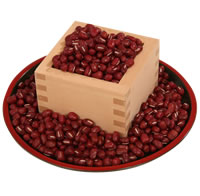
Tamba Azuki Beans, Product of Kyoto Prefecture
Tamba Azuki Beans, Produced in Kyoto (Tamba Daishounagon Azuki). Tamba Azuki Beans have a big horn and is pearly in color and also has a unique fragrance. Southern Kyoto, which consists of Kameoka and Funaigun, are blessed with land and weather which enables the production of high-quality red Azuki beans. Samurais were forced to seppuku, but the court noblemen of the Dainagon rank did not have to commit suicide. Thus the name Dainagon was given to the red beans, in which the skin of beans cannot be cut. The production of Kyoto Daishounagon Azuki bean is known for maintaining the best of its kind in terms of taste, quality and size. Even within the Kyoto vegetable category, these chestnuts are praised for its delicious flavor.
Articles on Tamba Azuki Beans
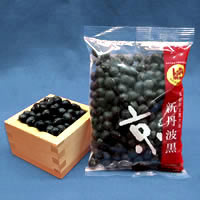
Black Soy Beans – New Tamba Black, Product of Kyoto Prefecture
Kyoto’s black soybeans, “Shin-tamba-guro” is known to be big in size with no wrinkles on the surface, where the shape will not be distorted despite being boiled. It has long been said that Tamba’s black soybeans are black, and is known for its taste, but in addition it is known throughout the country for its beautiful appearance. The early beginnings of cultivation is not known, but it is said to be during Edo period in Kyoto. The difference in temperature between the day and night, as well as the fog in autumn, are the conditions that help ripen the beans. The taste, quality and size are best in Japan, and it is considered healthy as it contains calcium, vitamins, as well as protein.
Articles on Black Soybeans (Shin-Tamba-Guro)
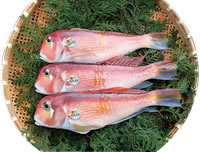
Tango Guji (Horse-head fish)
Tango Guji, known as a Horse-Head fish is a white meat fish, where the simple, but sweet taste is essential in Kyoto’s dishes. The longline fishing method is used to capture the fish, therefore the fish is not touched and the temperature is maintained and is kept fresh. In addition, only the most beautiful, scratchless, and freshest Horse-Head fish have been delivered. Because they are soft, it can also be eaten as dried-fish or pickled with miso (Miso-zuke). Other than that, it can be eaten together as Sashimi, Shioyaki, Teriyaki, Sakemushi, Karaage, Shabu-shabu and Sushi.
Articles on Tango Guji (Horse-head fish)
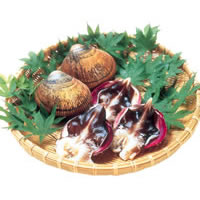
Tango Egg Cockle (bivalve mollusc)
The Tango Egg Cockle are kept at Kyoto Institute of Oceanic and Fishery Science. They are transferred to a raft and are nurtured for one year. This practice can only be seen in the Tango area in Kyoto.
These bivalve molluscs can be taken to the Pacific Ocean, but they may not be able to survive the summer due to the lack of oxygen and the harsh environment. Whereas the water in Tango is warm and the environment is gentle and comfortable throughout the year allowing them to feed off of the plankt. Their size is 2-3 times greater than the typical molluscs. Tango Egg Cockle meat becomes thicker as it grows and it is soft and sweet.
The Tango Egg Cockle can be eaten fried or boiled. Also, it is said that the name comes from the resemblance of the mouth of shucked shellfish.
Articles on Tango Egg Cockle (bivalve mollusc)
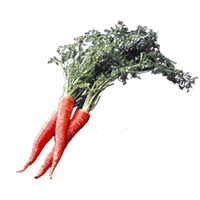
Kintoki Carrot
Kyo-Ninjin (carrot) is another name given and it is often thought to be the representative of Kyo-Yasai (Kyoto Vegetables), but there is no evidence that it has been cultivated in Kyoto, thus it is not included in Kyoto’s Traditional Vegetable category. However, it is often used in Kyoto-style dishes, and carrots that are cultivated in Kyoto are soft and red. Kintoki carrots contain a lot of lycopene and it is said that it helps to prevent cancer. The roots of the Kintoki-carrots are difficult to grow out, therefore as a common practice, the seeds are sowed close together and are then thinned afterwards.
Articles on Kintoki Carrots

Kuwai (Threeleaf Arrowhead)
This particular nut is used in Kyoto’s Osechi-Ryori (traditional New Year’s meal) with the hopes to grow sprouts. In the past, it is has been said that the Kuwai nuts were cultivated near Toji Temple, in Minami-ku, Kyoto, where the altitude is low and the low wetlands served as the most suitable growing environment. It was also used as a secondary crop for producing indigo plants, but due to the decrease in farms, there are very few places left that can produce them today in Kyoto.
Articles on Kuwai (Threeleaf Arrowhead)
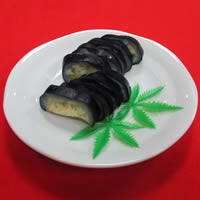
Kyo-Yamashina Eggplant Kyoto Pickles
The Kyo-Yamashina eggplant represents the summer vegetable of Kyoto. The Tsukemono (traditional pickles) is made using only Kyo-Yamashina brand eggplants. The taste is maximized and the unique appearance of Kyo-Yamashina eggplant can also be enjoyed. Each store has its own way of eating and producing delicious Kyo-Yamashina eggplant dish. You can compare them!
List of Kyo-Yamashina Eggplant for Kyoto’s Traditional Tsukemono
Articles on Kyo-Yamashina Eggplant Kyoto’s traditional Tsukemono
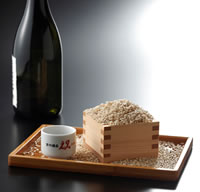
Iwai (brewer’s rice) − Kyoto Sake
Iwai (meaning celebration) is a brewer’s rice that was produced in year 8 of Showa era (1930), and it has been known for producing the perfect rice for Japanese sake making. This type of rice gained high recognition for producing Sake. However, the last production was in 1973, as the length of the rice stalks no longer suited the newer machineries that were being introduced to produce Sake.
The demand for producing Kyoto Sake using Kyoto’s Iwai rice had increased, and as a result, the government, producers, and the Sake makers made an effort to revive the Sake production. Thus, the production was re-started in 1992, and in 2012, the Iwai rice was recognised as a brand product.


